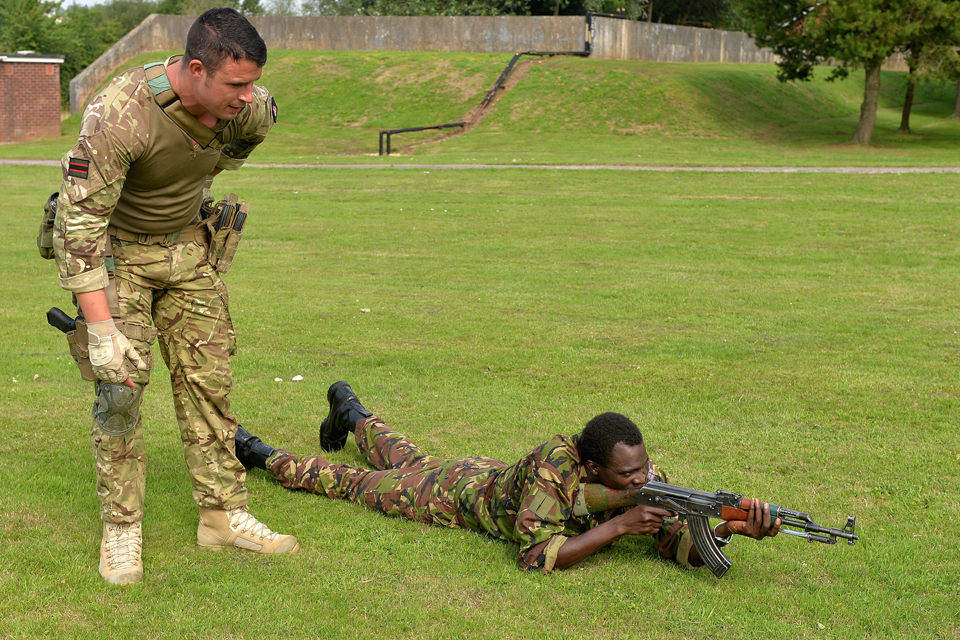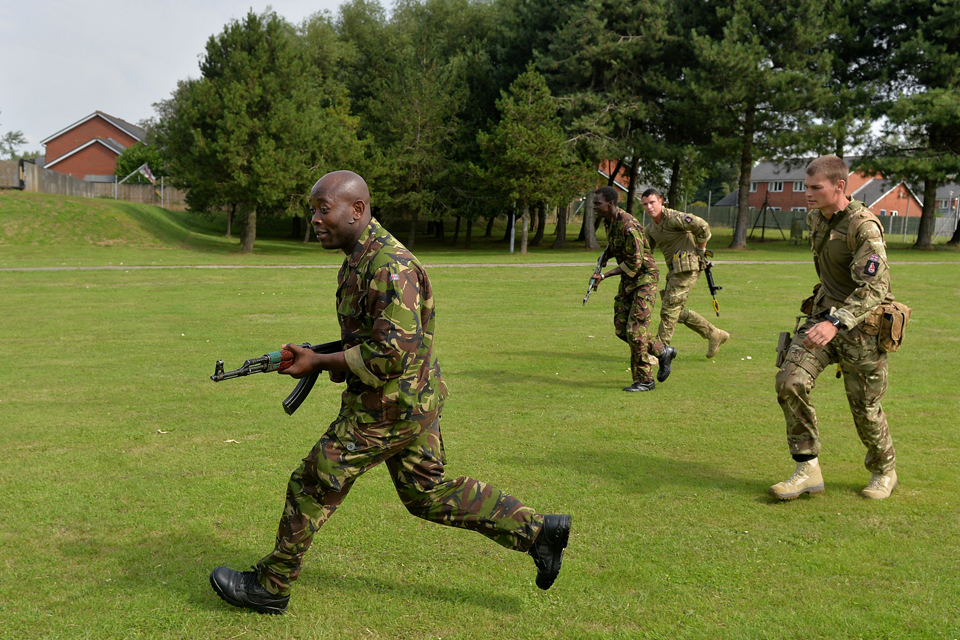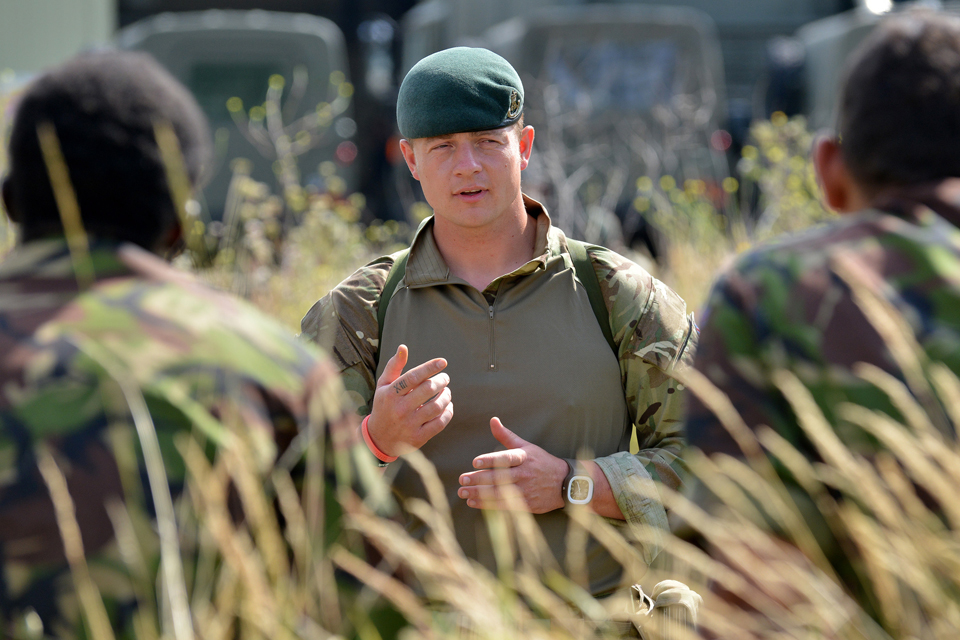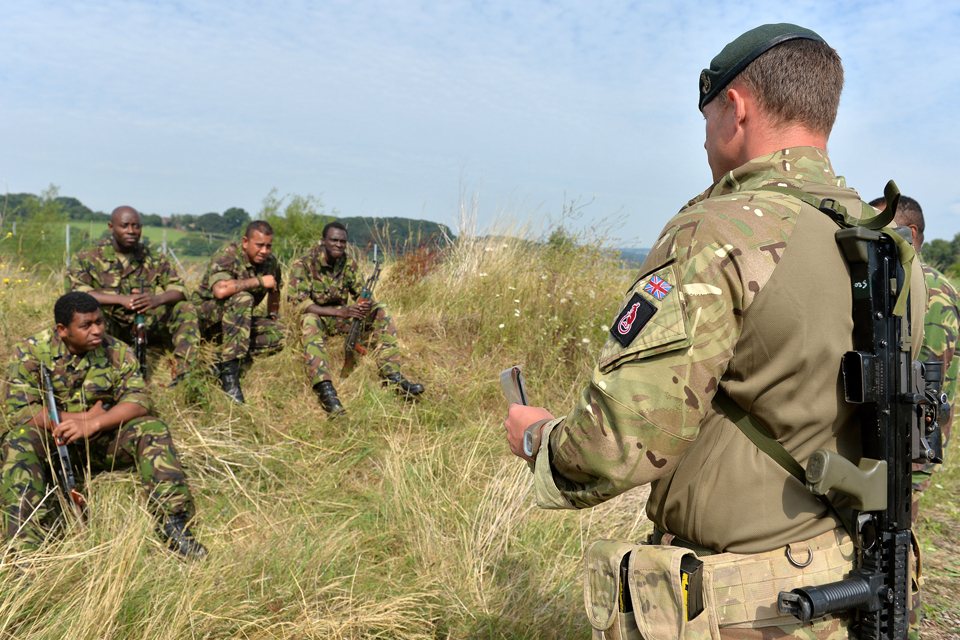September 17, 2013 defense-aerospace.com
(Source: Royal Air Force News; published Sept. 16, 2013)
Aircraft, crews and supporting personnel from the Royal Saudi Air Force, (RSAF) have been operating alongside their allies from the Royal Air Force as Exercise Saudi-British Green Flag took place at RAF Coningsby.
RSAF Typhoons from the 10th Sqn, based at King Fahad Air Base, Taif were flown into the Lincolnshire base alongside Tornados from the 75th Sqn, King Abdul Aziz Air Base, Dhahran. No 3 (Fighter) Squadron supplied the RAF Typhoon element, alongside a composite Tornado GR4 force from RAF Marham. The ten day exercise saw the Saudi and RAF crews fly in a series of training flights of gradually increasing complexity, during which the crews gained a wider knowledge of how the other force works and also how to use the relative strengths of their aircraft to generate greater overall effects.
Group Captain Johnny Stringer, RAF Coningsby Station Commander said, “For Coningsby and for the RAF this is a hugely significant exercise, an opportunity to fly the same aircraft types with our RSAF friends, to share our tactical thinking on how we employ our platforms, and for us as a station to support a detachment at significant range from a fellow air force.
He continued, “At the end of the exercise we will get to the point where success for us, and I think I can speak for the RSAF as well, is that our pilots, navigators, engineers, fighter controllers - all of the people who the RSAF has brought across that we are hosting both at Coningsby and more broadly in the UK - not only understand and know each other a little bit better, but if we ever have to go and fly and fight alongside each other for real then we will have the confidence in each other that we are able to do that.
Brigadier-General Mohammed Al-Shahrani, the RSAF Detachment Commander said, “One very important objective we have is to make sure that our people, from aircrew, to engineers, to staff, to fighter control and all the other roles, work side by side with the RAF; to be ready if we ever need to operate together.
Gp Capt Stringer,” In terms of what the exercise looks like, you are obviously drawn to Coningsby because it’s where the Tornados and Typhoons are operating, but we also have embedded RSAF personnel with our GCI personnel up at RAF Boulmer, and elsewhere, and we have them supporting the exercise directing staff. You can see from that breadth that this is more than just flying some aircraft together — this is a significant engagement.
Cooperation and greater understanding of how each air force works was a very clear objective for the exercise. This was not just limited to the pilots; engineers and other support staff on both sides also benefited. One example of the variety of roles that air force personnel provided during the exercise is that of No 3 Mobile Catering Squadron. Personnel from the squadron deployed to Coningsby to provide catering facilities to exercise personnel. Sgt Maxine Booth, “We are a mobile catering squadron, so our job is to pitch up in a tent somewhere and supply food. The big difference this time is that where we are usually in another country taking a piece of the UK to our forces, this time we are in the UK hoping to bring part of Saudi Arabia here. It has been a massively rewarding experience, both personally and professionally. We have some Saudi chefs with us and it has been fascinating to observe and learn different cooking techniques, for example with something as basic as rice. On a personal level, we are spending time with the Saudi’s, we are working with them and eating with them, it is great to learn about their culture and their language.
From the Saudi perspective, two aspects of the deployment stand out as significant. The exercise is the first significant deployment of the Typhoon outside of the Kingdom of Saudi Arabia. It is also the first time that the MRTT aircraft, (called Voyager by the RAF) has been used to "trail" aircraft operationally by any air force, a source of great pride for the RSAF. (A trail is when air-to-air refuelling aircraft are used to allow swift deployment; in this case the Typhoons flew directly from Saudi Arabia to the UK, refuelling en-route)
Brig-Gen Shahrani, “It is the first time we have deployed Typhoons for a long period of time outside our Kingdom so that means we are reaching out our logistic support to about 3,000 miles; it is very important for us to test that. Also it is the first time that we have used the Airbus MRTT for trailing from Saudi Arabia to here, which has proven successful.
Several of the Saudi pilots and engineers have been to Coningsby before as they undertook their Typhoon training at the Lincolnshire base, Brig-Gen Shahrani being the first pilot to do so in 2008.
Gp Capt Stringer, "The Saudis have been our friends and allies for a long time, and on an individual level it is wonderful to see friends such as Brigadier-General Shahrani back here", Brigadier-General Shahrani echoed Group Captain Stringer’s comments, "When you operate as allies, knowing the other person, being able to pick up the telephone and talk to someone you already know, is very valuable."
commenter cet article …





















 Canada's aerospace industry could lose about $10.5 billion worth of contracts over several decades if the federal government ultimately decides not to purchase the controversial F-35 Stealth Fighter, says a senior executive at Lockheed Martin.
Canada's aerospace industry could lose about $10.5 billion worth of contracts over several decades if the federal government ultimately decides not to purchase the controversial F-35 Stealth Fighter, says a senior executive at Lockheed Martin. Thirteen British companies and the U.K. Minister of Defence Equipment, Support and Technology participated in a Lockheed Martin [NYSE: LMT] Industry Recognition Event during the DSEI tradeshow today. Over the next 40 years, British industry will continue to play a vital role in the F-35’s global production, follow-on development and sustainment, bringing strong economic benefits to the kingdom.
Thirteen British companies and the U.K. Minister of Defence Equipment, Support and Technology participated in a Lockheed Martin [NYSE: LMT] Industry Recognition Event during the DSEI tradeshow today. Over the next 40 years, British industry will continue to play a vital role in the F-35’s global production, follow-on development and sustainment, bringing strong economic benefits to the kingdom. Northrop Grumman has begun company-funded development of a Directed Infrared Countermeasures (Dircm) system for fast jets, anticipating a requirement to protect the Lockheed Martin F-35 Joint Strike Fighter from heat-seeking air-to-air and surface-to-air missiles.
Northrop Grumman has begun company-funded development of a Directed Infrared Countermeasures (Dircm) system for fast jets, anticipating a requirement to protect the Lockheed Martin F-35 Joint Strike Fighter from heat-seeking air-to-air and surface-to-air missiles.















